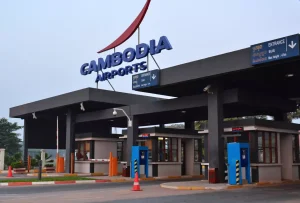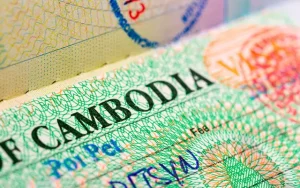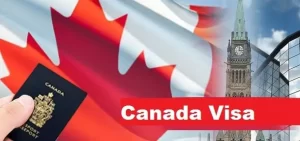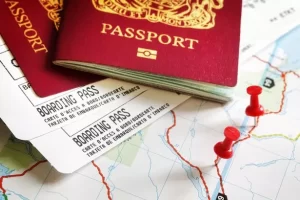
Are you ready to embark on a mesmerizing journey through the vibrant streets and majestic landscapes of India? From the bustling cities to serene temples, this country holds an extraordinary allure that captivates travelers from around the globe. But before you set foot in this enchanting land, there’s one crucial step you must take: obtaining a transit visa for India! Whether you’re planning a short layover or a longer stay, our comprehensive guide will unravel the intricacies of securing your transit visa smoothly. Get ready to navigate through the ins and outs of this process as we unveil all the essential details and insider tips that will pave your way to an unforgettable Indian adventure! Transit Visa for India
Introduction to Transit Visas
A transit visa is a special type of visa that allows travelers to pass through a country on their way to another destination. In the case of India, a transit visa is required for anyone who needs to make a stopover in the country while traveling to another destination.
Transit visas are different from regular tourist visas, as they are only valid for a short period of time and have specific restrictions and limitations. They are typically issued for 1-3 days, depending on the length of your layover in India.
Who Needs a Transit Visa?
Anyone who is not an Indian citizen and will be making a stopover in India while en route to another country will need to obtain a transit visa. This includes individuals traveling by air, land or sea.
It’s important to note that if you have connecting flights within the same airport without leaving its premises, you may not require a transit visa. However, if your layover requires you to leave the airport or change terminals, then you will need one. URGENT EMERGENCY INDIAN VISA
Types of Transit Visas
There are two types of transit visas available for India – Direct Airside Transit Visa (DATV) and Visitor in Transit Visa (VIT). The type of transit visa required depends on your nationality and travel plans.
The DATV is suitable for travelers who do not intend on exiting the airport during their layover. It allows you to change planes at an Indian airport without passing through immigration control.
Why You Need a Transit Visa for India?
There are many reasons why you may need a transit visa for India, and understanding these reasons is crucial in order to successfully obtain one. In this section, we will dive into the specifics of why a transit visa is necessary for traveling through India.
First and foremost, it’s important to understand what a transit visa actually is. A transit visa is a temporary travel document that allows you to pass through a country on your way to another destination. In the case of India, this means that if you are flying through an Indian airport on your way to another country, you will need a transit visa.
One of the main reasons for needing a transit visa when traveling through India is due to immigration regulations. As with any other country, India has strict immigration laws that must be followed by all travelers entering their borders. Even if you are simply passing through on your way to another country, you are still required to comply with these regulations.
Another reason for needing a transit visa for India is security measures. The Indian government wants to ensure the safety and security of its citizens as well as those who are visiting the country. Therefore, having proper documentation such as a valid transit visa helps authorities keep track of who is entering and leaving the country at all times.
Furthermore, obtaining a transit visa also serves as proof that you have sufficient funds and accommodations during your stay in India. This eliminates concerns about potential illegal immigrants or individuals who may overstay their visit.
Types of Transit Visas Available for India
India is a popular destination for travelers from all over the world. Whether you are visiting for business, leisure, or simply passing through on your way to another country, having the correct visa is essential. If you are planning to transit through India, it is important to understand the different types of transit visas available.
1. Direct Airside Transit Visa (DATV)
A Direct Airside Transit Visa allows you to stay in the international zone of an Indian airport without passing through immigration control. This type of visa is suitable if you have a layover in India and do not plan on leaving the airport during your transit. It is usually valid for up to 24 hours.
2. Transit Visa
A Transit Visa allows you to enter India with the intention of traveling to another country via land or air within 15 days. This visa can be used for both single and double entry and is valid for a maximum stay of 3 days each time.
3. Tourist Visa with Transit
If you are transiting through India but also wish to explore some tourist destinations in the country, then a Tourist Visa with Transit would be suitable for you. This type of visa allows multiple entries into India within its validity period and can allow stays up to 60 days per visit.
How to Apply for a Transit Visa?
Applying for a transit visa for India can seem like a daunting task, especially if you are unfamiliar with the process. However, with some knowledge and preparation, obtaining a transit visa can be a smooth and straightforward experience. In this section, we will walk you through the step-by-step process of applying for a transit visa for India.
Step 1: Determine your eligibility
The first step in applying for a transit visa is to determine if you are eligible. A transit visa is issued to travelers who are passing through India on their way to another destination. It allows for a short stay in India (up to 15 days) without the need for a regular tourist or business visa. To be eligible, you must have confirmed onward travel tickets and necessary visas/documents required by your final destination.
Step 2: Gather required documents
Once you have determined your eligibility, the next step is to gather all the necessary documents for your application. These may include:
– A completed and signed application form.
– A valid passport with at least six months of validity remaining from the date of arrival in India.
– Two recent passport-sized photographs.
– Confirmed onward travel tickets.
– Proof of sufficient funds to cover your stay in India.
– Visa fee payment receipt.
It is important to note that additional documents may be required depending on your country of residence or nationality. It is best to check with the Indian embassy or consulate in your area for specific requirements.
Required Documents:
Obtaining a transit visa for India can seem like a daunting task, especially if you are not familiar with the process. In order to make your application process smoother, it is important to gather all the necessary documents beforehand. The following is a list of required documents that you will need to submit along with your visa application:
1. Valid Passport: Your passport must be valid for at least six months beyond your intended date of entry into India. It should also have at least two blank pages for visa stamps.
2. Visa Application Form: You will need to fill out and sign the online visa application form available on the Indian government’s official website.
3. Two Recent Passport-sized Photographs: These photographs must be in color and taken against a white background within the last three months.
4. Proof of Travel Arrangements: A copy of your confirmed round-trip flight ticket showing your entry and exit dates from India is required.
5. Proof of Sufficient Funds: You must provide evidence of sufficient funds to cover your expenses during your stay in India, such as bank statements or traveler’s checks.
6. Letter Stating Purpose of Visit: If you are applying for an Indian transit visa, you will need to provide a letter stating the purpose of your visit and explaining why you require a transit visa instead of a regular tourist visa.





